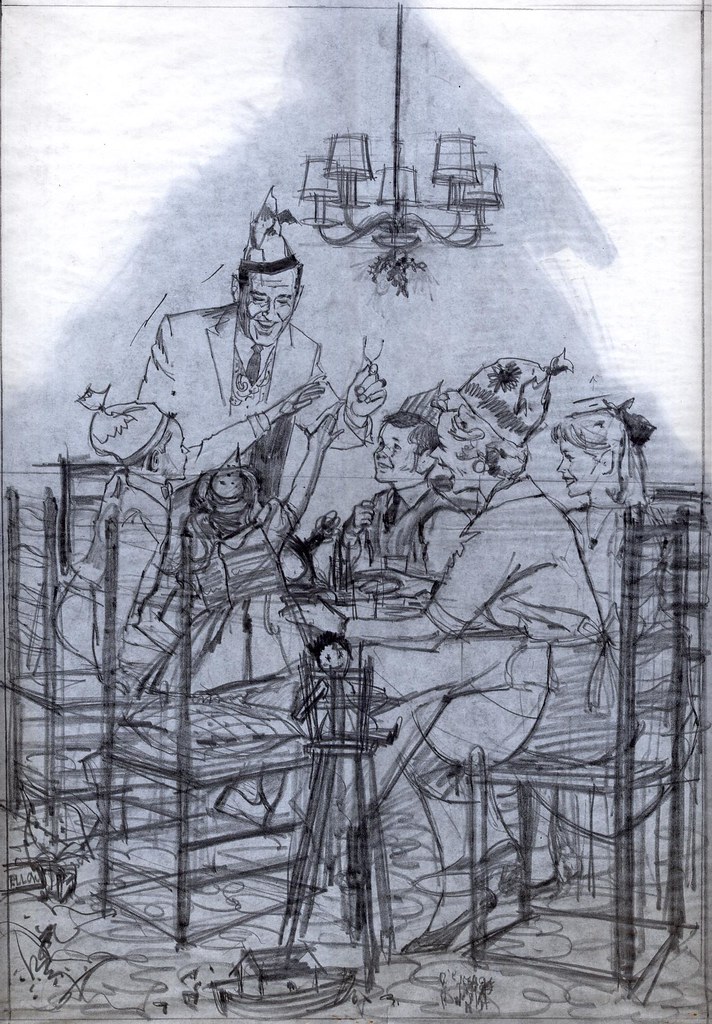
Once that stage was completed to Will's satisfaction, a final sheet of fresh bond paper would be laid on top - this would become the finished pencil sketch shown above. Now all important details of character and environment were clearly defined. Notice though that Will allowed some aspects of the composition to remain deliberately vague and that the drawing has an overall loose and energetic quality.
Will made sure that all the visual information needed was there - but that the drawing did not end up looking static and lifeless - as if it were carved in stone. Will always understood that the mind's eye enjoys filling in missing detail and bringing together loose ends. As well, the looseness allowed Will to continue to explore in the painting stage and prevented the finished art from becoming merely an exercise in rendering.
Finally, the back of the sketch was rubbed with a graphite stick or a 6B (very soft) pencil (you can see the dark shadow of the graphite on the back showing through in this scan). Will would then trace over the sketch with a hard pencil and in this manner transfer it to the illustration board on which he would execute the finished art.
Tomorrow we'll look at the finished illustration.
It's interesting to see this process from an old school illustrator. Process is one of those rare things artists seem willing to share...or they tend to gloss over some of what they have to do.
ReplyDeleteYour blog has inspired me to post my comic art process this week on my blog...which compared to most artists I think is a bit labor intensive, considering the results. ;)
Can't wait to see the next few steps.
=s=
=s=
Great stuff, Leif.
ReplyDeleteIt's too bad there's no record of the final illustration in stages.
What I find fascinating is that this is almost exactly the same process I use in the pencil stage, but with vellum or tracing paper. I did recently post a step by step of a cover I did. It focuses on the finish instead of the sketch, though.
ReplyDeletehttp://cafurl.com?i=3478
Thanks for another great series, Leif!